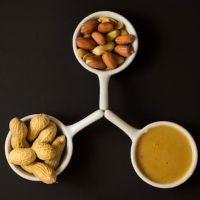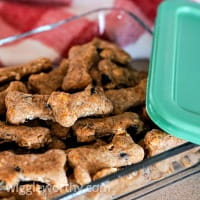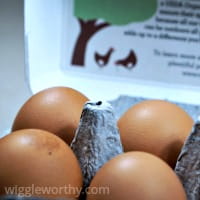Foods That Are Poisonous To Dogs
Knowing which foods are poisonous to dogs is hugely important because every year dogs die from eating common 'human' foods.
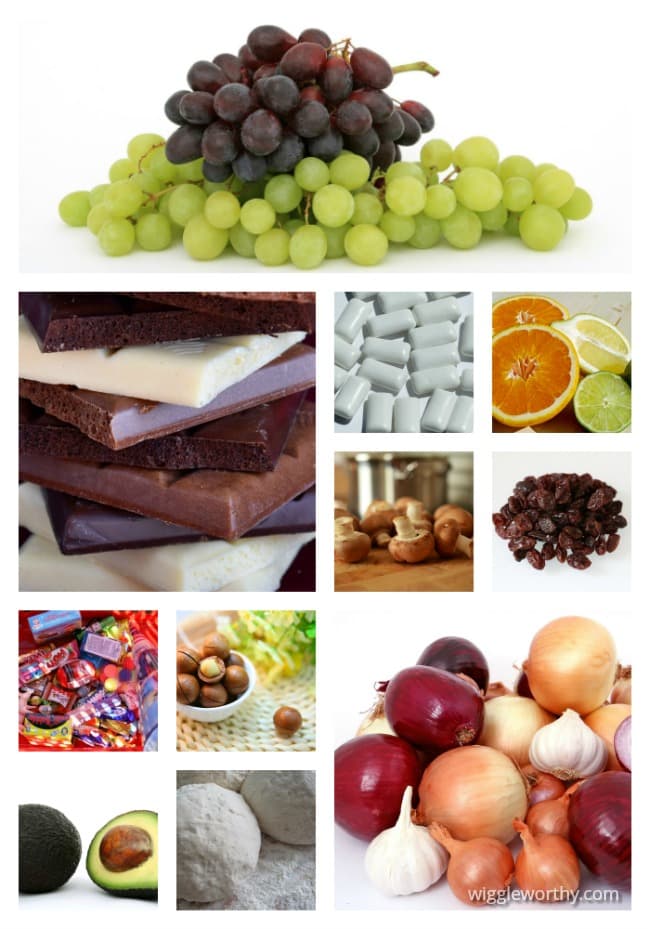
The first, and most important way you can protect your dog is by making sure that you don't allow him to eat any dangerous, poisonous or toxic foods.
The second way, is by being able to recognize signs and symptoms of poisoning or toxicity (and having the number of a Poison Control Hotline saved in, or near, your phone).
The most dangerous foods for dogs include:
- Chocolate
- Xylitol
- Grapes/Raisins
- Macadamia Nuts (and certain other variety of nuts)
- Onions
- Uncooked Yeast Dough
In addition to these, there are several other common human foods which are bad for our dogs... and could be dangerous, or even deadly in certain situations.
They are either not fatally poisonous, or only PART/S of them are dangerous (ie the seeds/rind etc.)
Even though they may not be as toxic as those first half-dozen items, these can still make your dog very sick, and depending on how much or what part of the food he eats, could have tragic consequences.
These dangerous foods for dogs include:
Foods That Are Highly Toxic To Dogs
The following foods are toxic and could cause serious damage, even death, if your dog eats them:
Chocolate
Chocolate is poisonous to dogs because it contains Theobromine which is a natural stimulant. It also contains caffeine, another natural stimulant. These compounds affect the heart and central nervous system.
Symptoms of chocolate poisoning in dogs can include vomiting, diarrhea, agitation, drooling, breathing difficulties, seizures/convulsions, death.
- The darker the chocolate the more poisonous it is.
- It takes less chocolate to poison a small dog than a large one.
BUT, the bottom line is ANY dog can die from eating chocolate (as little as 1 oz of dark chocolate could kill a 50 lb dog), so be very careful to keep this out of your dog's reach and never give him tid-bits like pieces of chocolate-chip cookies, chocolate cake, candy bars etc.
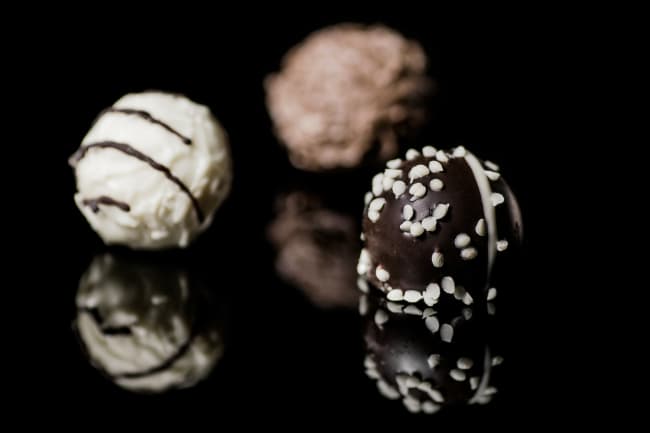
Baking or dark chocolate
This is the most dangerous kind. A toxic dose is APPROX. 1 oz. per 10 lbs of body weight.
Semi-sweet chocolate
Toxic dose is APPROX. 1 oz. per 5 lbs of body weight.
Milk chocolate
Toxic dose is APPROX. 1 oz per 1 lb of body weight
White chocolate
This contains very little Theobromine or caffeine and isn't toxic in the way any other type of chocolate is. The fats and sugars can still make your dog pretty sick though.
If the worst happens and your dog has eaten some chocolate, you can use this Chocolate Toxicity Meter for Dogs to find out how toxic a dose he has ingested.
However, ALWAYS consult a veterinarian on an emergency basis or call the Pet Poison Control Helpline if this happens! Symptoms may show up quickly, or can take hours (or longer) but don't 'wait and see'. It could cost your dog his life.
Carob is a dog-safe alternative to chocolate which you can use safely in your dog treat recipes to add some delicious chocolate-y flavor.
Xylitol (a Artificial Sweetener)
Xylitol is a sugar substitute found in chewing gum (including sugar-less gum), hard candy, mints, some peanut butters or almond butters, jams/jellies, syrups, and some foods that are designed for diabetics or are low/reduced sugar varieties.
Xylitol is extremely toxic to dogs. It causes a sudden and dramatic increase in blood insulin levels which leads to a dangerous drop in blood sugar (hypoglycemia). Xylitol toxicity can also cause acute liver failure, seizures and/or death.
Ingesting 35 - 45 mg of Xylitol per lb of bodyweight is enough to cause severe hypoglycemia and potentially lead to fatal consequences.
Symptoms of xylitol poisoning in dogs include vomiting, weakness, loss of co-ordination, seizures and coma. These can occur within 30 minutes of ingestion, or up to 18 hours later... by which time irreversible damage is most likely to have been done. Don't wait. If your dog eats anything containing xylitol, get him emergency veterinary attention right away.
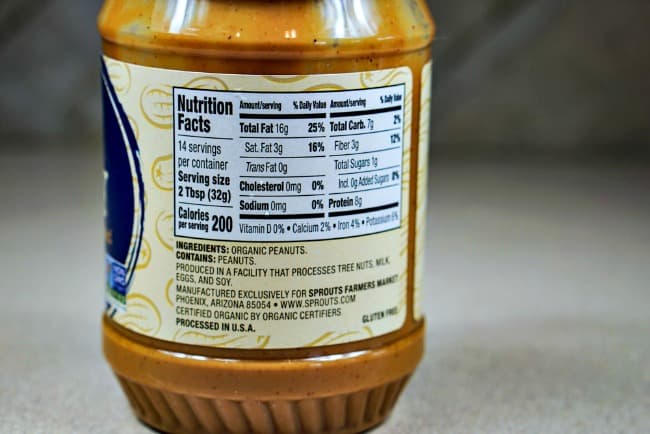
Some brands of peanut butter (and almond butter) contain xylitol so it's very important to double check the ingredient label on any nut butters you use in your dog treat recipes.
Grapes & Raisins
Veterinarians and researchers don't know exactly why grapes and raisins (also currants which are tiny, dried grapes) are poisonous to dogs, but there is no doubt that they are. Ingesting even a small amount of any of these can cause sudden, severe illness. Even a bagel or scone which contains raisins can poison your dog!
There is no clear-cut toxicity calculation and each dog is affected differently. A large dog is just as at risk of injury or death if he eats a tiny amount of grapes/raisins as a larger one. Overall health, breed and age doesn't seem to make a difference.
Signs of poisoning by grapes, raisins or currants includes vomiting, diarrhea, weakness, loss of appetite, abdominal pain, reduced urine output (or even a complete halt to urination), shaking, collapse, seizures, coma, kidney failure, death.
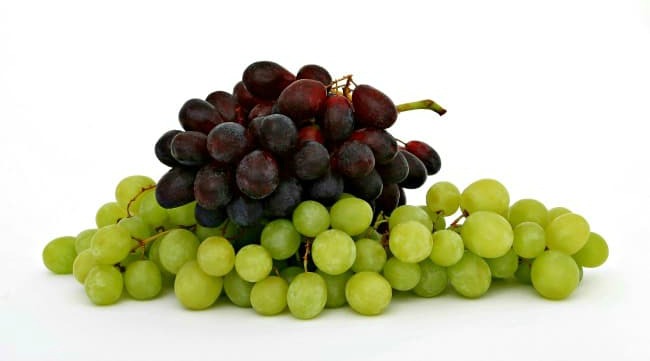
Some symptoms can show up within a couple of hours of ingestion, and untreated will lead to more serious symptoms and potentially kidney failure.
Get immediate veterinary help for your dog if he eats any raisins, grapes or currants (or anything containing them). Quick treatment may prevent serious complications from developing.
Macadamia Nuts
Although macadamia nuts are toxic to dogs, they are not fatally poisonous. If your dog eats these nuts (or a product which contains them) he will develop symptoms which could include vomiting, lethargy, shaking, muscle weakness, and/or a dangerous rise in body temperature (hyperthermia).
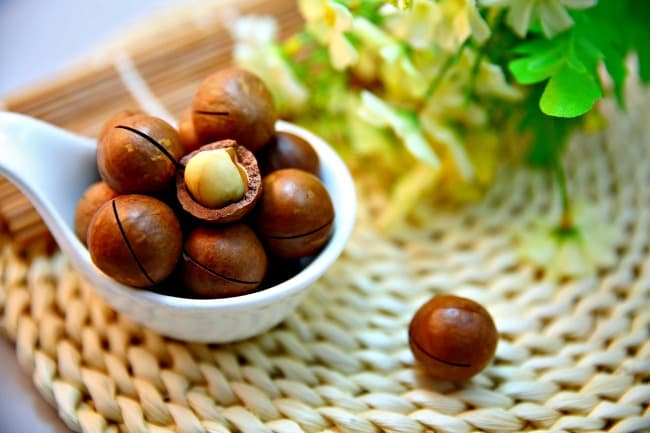
Most dogs recover within 48 hours but it's important to get veterinary help to make sure serious complications don't occur.
Some dogs may develop pancreatitis after eating macadamia nuts. Pancreatitis (inflammation of the pancreas) can be fatal and also needs emergency veterinary care.
Check out this page to learn about other varieties of nuts which are toxic to your dog, as well as which ones you CAN offer safely.
Onions
Onions (including leeks and chives) contain toxic compounds called organosulfoxides. Ingesting these can cause dangerous, potentially fatal, damage to your dog's red blood cells.
Early symptoms of toxicity include vomiting, diarrhea, loss of appetite and abdominal pain. These are followed by a racing heart, rapid breathing, pale gums/tongue, dark urine, anemia.
Research has shown that organosulfoxides are not destroyed by heating or by being dried, so eating cooked onions is still dangerous for your dog.
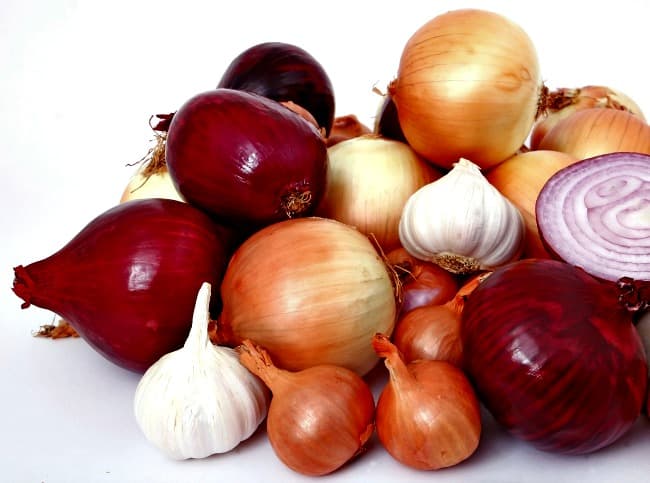
One medium sized onion is enough to provide a toxic dose of organosulfoxides to a dog weighing 45lbs.
Now, that's a lot of onion for one dog to eat. But it has been known to happen, many times. Keep your dog safe by making sure that you don't feed him onion, in any form, or any amount.
Uncooked Yeast Dough
Uncooked yeast dough (like the dough used to make bread for example) is very dangerous to your dog, and can even kill him.
There are two ways that dough can do serious damage.
The first is very simple, but potentially lethal... if your dog ingests uncooked yeast dough it will continue to rise/expand in his belly.
This is obviously a problem as it could cause internal damage and may lead to a condition called gastric-dilitation volvulus (more commonly known as bloat). Symptoms of bloat or a dangerously expanding stomach include a visually apparent distended abdomen (but this is not always present), vomiting or retching which doesn't produce any vomit, elevated heart rate, panting, weakness, pacing, collapse. And death.
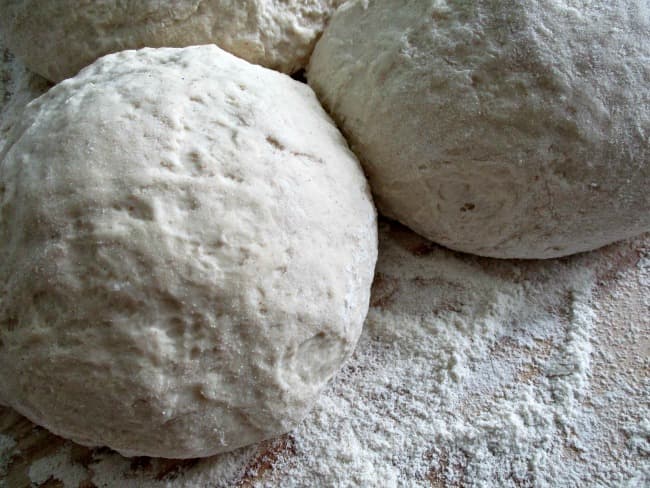
The second danger to dogs posed by uncooked yeast dough comes from the fermentation process which is what actually makes the dough rise.
This fermentation produces carbon dioxide gas and alcohol, resulting in alcohol poisoning.
Symptoms of alcohol poisoning include severe and dangerous drops in blood sugar , body temperature and blood pressure, seizures, and death.
Dangerous Foods for Dogs
Some of the foods which are bad for our dogs, or which are only partially toxic (ie only the seeds, pits or skin) might surprise you. But knowledge is power right?
Apples
Now, we all know that dogs can eat apples, so what's the deal? Well, although the flesh of an apple is perfectly safe for your dog (and a staple ingredient in many of my dog treat recipes), the seeds of an apple contain trace amounts of type of cyanide called amygdlin.
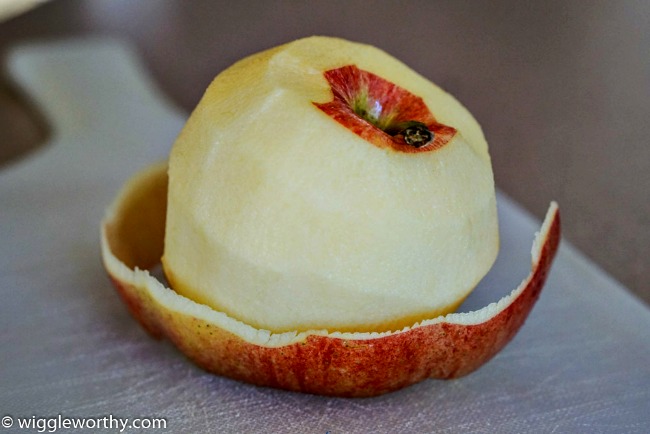
Your dog would need to eat a LOT of apple seeds to do himself any damage, so don't freak out if he eats a couple.
But just bear in mind that eating a lot of apple seeds at once, or eating smaller amounts on a regular basis, could cause elevated levels of cyanide in his body which could be dangerous.
Apple cores can also be a choking hazard, so to be safe, keep the entire core/seeds out of his reach.
Other than in these instances, raw or cooked apples are a totally healthy treat for your dog.
Avocados
Avocados contain a fungicidal toxin called Persin, which is concentrated in the avocado seed (or pit) but is also in the flesh.
Although persin is very toxic to certain species of animals (including horses, cattle, sheep, goats, rodents, birds and more), dogs and cats are rarely seriously affected.
However, if your dog does ingest avocado he may well experience vomiting and/or diarrhea. It's possible for pancreatitis to develop due to the high fat content of avocados, and pancreatitis can be fatal and needs emergency veterinary attention.
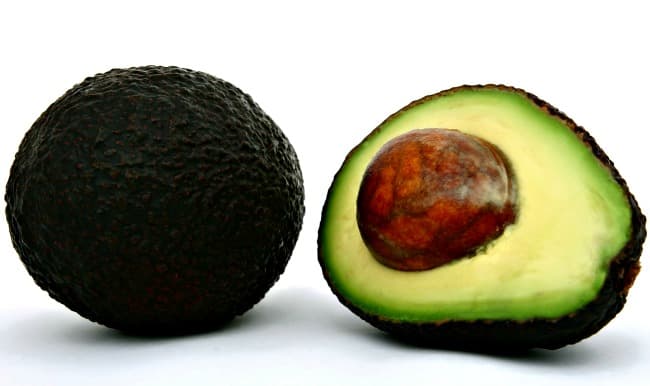
The avocado pit/seed is dangerous to dogs for an additional reason - it's a choking hazard! If your dog does swallow an avocado pit without choking on it, there's a chance that it will get stuck in his digestive system and cause a blockage and the concentration of persin will very likely make him ill. So in this type of situation get veterinary help quickly.
Citrus Fruit
The skin, seeds and pith of citrus fruits like oranges, clementines, tangerines, lemons and limes can irritate your dogs digestive tract, especially if he eats a lot of them.
The flesh is less irritating, and as long as he only eats a little of them, most citrus fruits are not considered off limits for dogs.
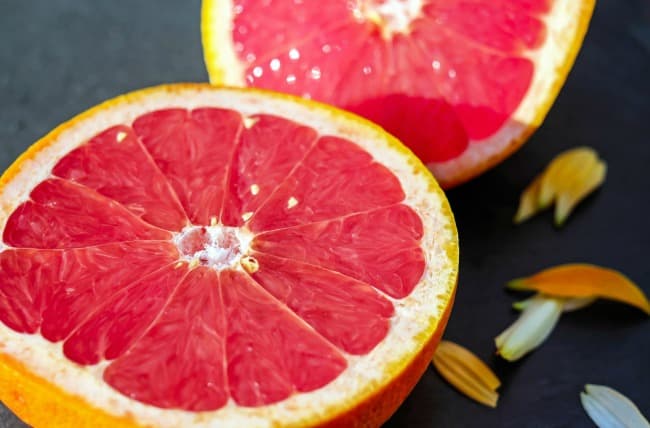
Grapefruit are a different story because although the grapefruit flesh isn't poisonous to dogs (see ASPCA info. for grapefruit toxicity), the rind, pith and leaves contain a compound called psoralen, which is toxic and can cause serious digestive upset and skin problems.
If your dog eats ingests grapefruit, especially the skin/pith/seeds etc. contact your veterinarian or a poison control hotline for advice.
Garlic
According to the Pet Poison Hotline, garlic is mildly to moderately toxic because it belongs to the Allium family (which also includes onions of all kinds) and contains organosulfoxides which are toxic compounds.
If your dog ingests enough garlic to reach toxicity it will affect his red blood cells and lead to serious, potentially fatal, health issues.
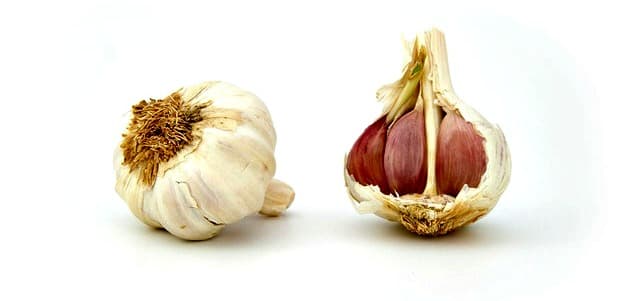
At least one study has shown that even fairly large doses of garlic on a daily basis don't necessarily cause serious problems, and there is some dispute over whether or not there are health benefits from small amounts which are considered safe.
But, in general it is best to avoid giving raw or cooked garlic (cooking does NOT destroy the toxin) to your dog.
Mushrooms
The situation with mushrooms toxicity and dogs is pretty similar to the situation with people... some mushrooms are safe, and some aren't.
The mushrooms in the grocery store produce section are safe for both humans and dogs, but there are also wild mushrooms which are poisonous to both.
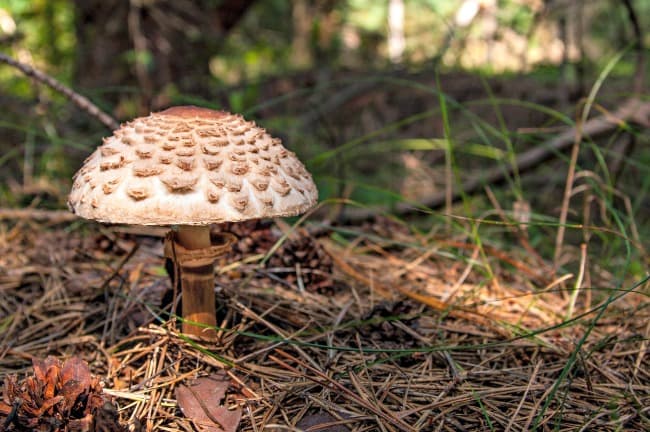
While humans don't generally go around nibbling on random mushrooms we find in the wild, dogs are not so careful.
Some mushrooms which show up in our yards on an annual basis are toxic for our pets. As are the mushrooms which grow wild in the countryside.
Some are lethal very quickly and only take a small amount to cause death. Others are less toxic but still dangerous.
To keep your dog safe be sure to remove ANY mushrooms you see in your yard and supervise walks so that he isn't able to sneak in a nibble that could be deadly.
Symptoms of mushroom poisoning can include vomiting, diarrhea, weakness, loss of co-ordination, drooling, confusion, seizures, coma, liver failure, organ damage and death.
If you think your dog may have ingested any mushroom (that you didn't buy at a big-chain grocery store and you know is edible) get him emergency veterinary help. It's a life or death situation.
Poison Control Helplines:
If your dog ingests a food (or anything else) which is poisonous it's important to get professional help right away. There are two poison control hotlines specifically for animal poisoning. There is a charge for these services but as you are most likely in a life-or-death situation it's a small price to pay!
ASPCA Animal Control Center 1-888-426-4435 or 1-800-548-2423
International Animal Poison Control Center 1-888-232-8870
This type of life-or-death information needs to be accurate so I have used several reliable resources to back up my personal knowledge and double check the facts.
The resources used to create this page include: ASPCA Animal Poison Control, AKC Expert Nutrition Advice, Pet Poison Helpline, Veterinary Medicine DVM 360, Pet Health Network, The Humane Society,
You Might Also Like These pages...
- Home
- Dog Treat Ingredients
- Foods Poisonous to Dogs
